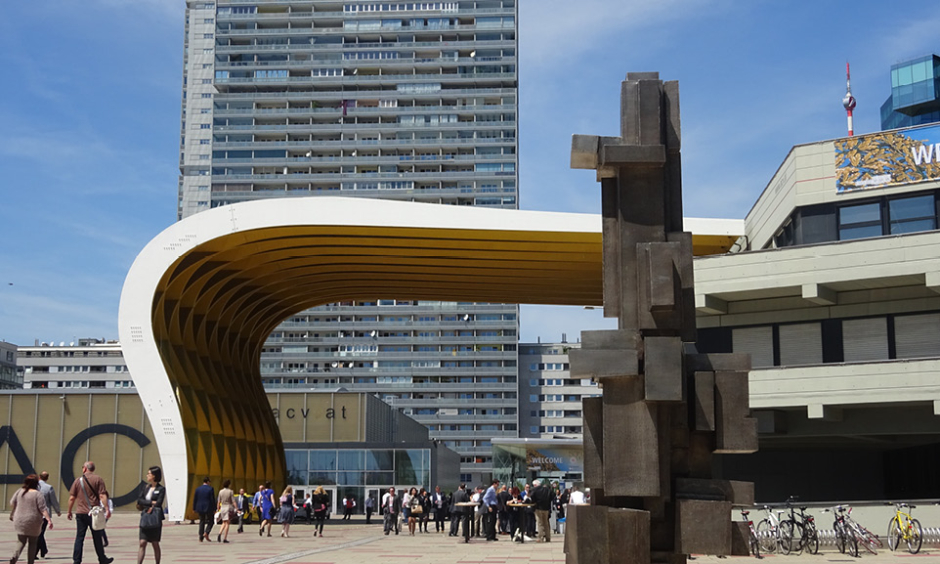This year’s congress stood on the shoulders of the giants of medical history; from Semmelweis and his famous improvements to hygiene in hospitals, to Landsteiner and the discovery of the ABO blood typing system, there is no denying that Vienna, Austria is the perfect location for celebrating and creating medical progress. ERA-EDTA 2016 lived up to this history with many major developments being presented and many future successes discussed.
The congress had almost 8,000 delegates in attendance this year, which reflects the continued success that the event has enjoyed over the last 53 years. The theme this year was indicative of the innovative and futuristic nature of nephrology practice: ‘From big data to personalised therapy: Biostatistics meets molecular medicine’. In an interview, Prof Gert Mayer, President of the congress, described these new techniques as complementary to current methods, stating that the two can go “hand-in-hand”. This year also saw a video message from Karen Kadenbach, Member of European Parliament, on health policy-making from the perspective of the European Community. This, along with many cross-society discussions, formed a great deal of collaboration between clinicians, academics, policy makers, and industry to help develop European nephrology care.
Prof Andrzej Wiȩcek, President of ERA-EDTA, spoke about the future of both the congress and the society with great promise. Firstly, he discussed the growing role of young nephrologists and encouraged their involvement, saying: “The youngsters are our future, they keep our society young, alive, and continually evolving!” Following this he discussed the current challenges in nephrology and the importance of increasing opportunities for women in the field.
An abundance of awards were received during the congress for some exemplary achievements from across the spectrum of nephrology. The award for the category ‘Outstanding Contributions to Nephrology’ went to Prof Roseanna Coppo, Italy, for her long-standing positions in educational programmes, scientific committees, and journals. Prof Pierre Ronco, France, was the recipient of the ‘Outstanding Basic Science Contributions to Nephrology’ award, specifically for his work in the pathophysiology and immunology of renal disease. Prof Christoph Wanner, Germany, is the pioneer of a number of clinical trials which have developed the field of cardiovascular and renal health in Type II diabetes and revolutionised treatment options, making him a deserving winner of the award for ‘Outstanding Clinical Science Contributions to Nephrology’. The Stanley Shaldon award for young investigators went to Dr Emilie Cornec-Le Gall, France, who has consistently presented outstanding work over the last 3 years and is now completing a post-doctoral fellowship at the Mayo Clinic.
In addition to these awards, a number of smaller awards were given for the best abstracts presented during the congress. These covered many topics and represented institutions from across the world. With regards to the presentations that were on display at the event, delegates were treated to fascinating insights and studies that reflected every aspect of the field of nephrology. With topics including chronic kidney disease, renal replacement therapy, and dialysis, this year’s ERA-EDTA really had something for everyone to take away from the event.
The team at EMJ has been hugely impressed by the high quality of research and the number of developments that have been made in the world of nephrology this year. We have distilled down the most impactful news and the most interesting presentations and discussions from ERA-EDTA 2016 in this review. We hope that it provides you with some thought-provoking ideas that will help to develop and refine your practice. The 54th edition of ERA-EDTA will take place in Madrid, Spain next year, and we hope to see many of you there!
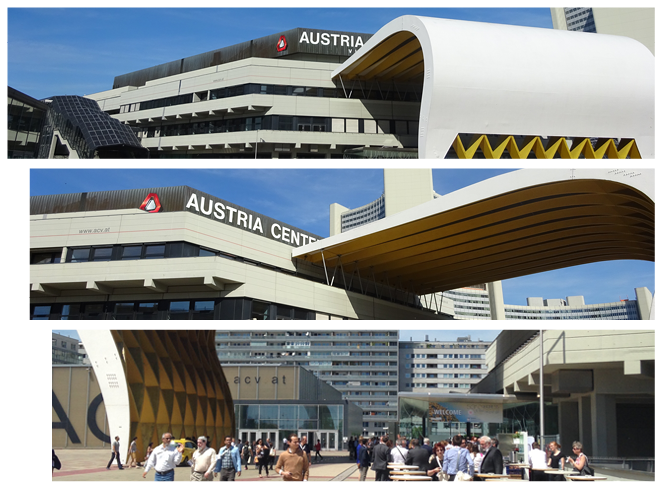
Update on Miracle Baby Dialysis Machine
MAY 2016 marks the 2-year anniversary of the creation of the innovative baby dialysis machine, CARPEDIEM (cardo-renal paediatric dialysis emergency machine), by Prof Claudio Ronco, Director of Department of Nephrology, Dialysis and Transplantation, International Renal Research Institute, St Bortolo Hospital, Vicenza, Italy.
Prior to the creation of this machine, babies born with acute kidney injury (AKI) had a high risk of mortality due to the lack of adequate dialysis equipment. Adult dialysis machines would be used, only with smaller filters and other applications not specifically suitable for such small patients with significantly smaller blood vessels. These adaptations tended to harm the patient.
AKI in neonates is not a rare phenomenon. In a recent study, 30.3% of the 357 enrolled neonates had AKI, 72.2% of whom were at AKI Stage 1. The number of paediatric AKI patients receiving surgery for congenital heart disease was even higher at 45%. Another study showed the outcome of using adult dialysis machines on neonates with both AKI and sepsis to have a particularly high mortality rate, at 70.2%.
CARPEDIEM marked a huge turning point for the treatment of AKI in neonates, as symbolised by its first success story, a baby girl named Lisa, and continues to be celebrated as a fantastic innovation which is saving the lives of many babies. So far, more than 40 babies have been treated and many have been saved. According to Prof Ronco, the mortality rate for babies has been significantly reduced to 30–35%, halving the previous rate.
The future of CARPEDIEM is looking bright. According to an ERA-EDTA press release dated 22nd May 2016, a publication is being drafted to detail the success so far of the machine, as well as extensive documentation being recorded in order to properly assess the outcomes of all the babies treated with CARPEDIEM. Additionally, long-term data will be gathered, which will hopefully provide further details of its development.
Peritoneal Dialysis: Providing Options for the Elderly
PRE-EMPTIVE placement of a marsupialised catheter can increase peritoneal dialysis (PD) prevalence. PD has been declining across Europe, with <10% of patients opting for its use due to various socioeconomic factors. However, this form of dialysis can have outcomes comparable to haemodialysis as well as inflicting less stress on the circulatory system, lending itself to use in geriatric patients.
The research, presented in an ERA-EDTA press release dated 22nd May 2016, incorporated 140 patients who had a marsupialised catheter inserted during a pre-dialysis education programme. These patients had an estimated glomerular filtration rate of 10–15 mL/min; mean age of the patients was 65.9±14.5 years and the cohort was 65.7% male.
The process was conducted using a simplified Moncrief–Popovich technique and an incremental dialysis dose (IDD) programme was available. Over a 3-year follow-up data regarding the catheter, patient training time, and PD prescriptions were recorded. The catheter had a short break-in and long survival time (75±291 days and 676±508 days, respectively); there were no severe complications and all catheters were patent at removal. The number of patients opting for PD increased from 22 to 63, representing a prevalence increase from 8% to 19%.
The training in the use of the catheter was simple with 88% completed as a short, outpatient session. Those in the IDD group (n=86) were split into three groups by age: <65 years, 65–75 years, and >75 years old. Those >75 years old maintained the one-night exchange for longer than the other groups (164 days and 285 days versus 480 days) and the same pattern was observed for two exchanges/day (394 days and 440 days versus 711 days). This group saw an increased medium clearance whereas a decline was seen in the other groups. This research thus provides more options for healthy elderly patients who may wish to avoid haemodialysis.
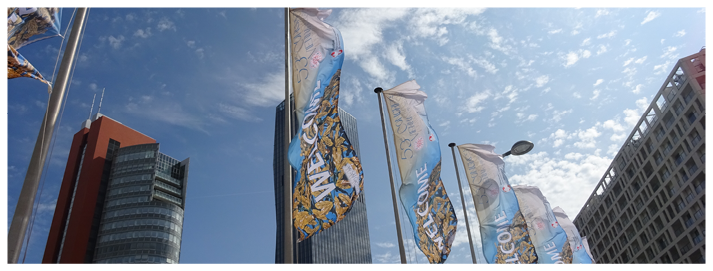
Blood Pressure a Factor in Chronic Kidney Disease Cardiovascular Risk
LOWER blood pressure has been revealed to be beneficial for people with increased cardiovascular risk, including patients with chronic kidney disease (CKD), a recent study has revealed.
The SPRINT study, a randomised trial of >9,000 patients with CKD, showed that better outcomes for a composite primary endpoint of myocardial infarction, acute coronary syndrome, stroke, heart failure, or death were achieved in the patients who received intensive therapy to lower their blood pressure, although no benefit was seen in composite renal outcome. In an ERA-EDTA press release dated 21st May 2016, Prof Carmine Zoccali, Nephrology, Hypertension, and Renal Transplantation Unit, Ospedali Riuniti, Reggio Calabria, Italy, commented that “Because no renal benefits were seen, many doctors believed that there is no advantage of a more intensive blood pressure control in CKD patients. But renal benefits are only one side of the coin, the other side are the cardiovascular benefits.”
A meta-analysis of 16 studies showed that lower blood pressure equated to lower cardiovascular risk in those patients considered high-risk, and the reduction was the same for patients with and without CKD. CKD patients with the same high level of cardiovascular risk as non-CKD patients had a cardiovascular benefit if their blood pressure was reduced to <120 mmHg.
Although CKD patients were included in the present study, patients with advanced CKD were excluded (i.e. those with glomerular filtration rate <20 /mL/min/1.73 m2 or proteinuria 1 g/day). Since lowering blood pressure must be undertaken carefully to avoid side effects, a new randomised trial would need to take place to test if these patients, who are also likely to benefit from the treatment, have similar outcomes. Prof Zoccali counselled that “CKD patients have an excessively high cardiovascular mortality and therefore every measure should be taken to reduce it. A stricter surveillance of the more intensively treated patients is needed.”
Elbasvir/Grazoprevir for Heptatitis C Virus-Infected Chronic Kidney Disease Patients
HOPE for treatment of hepatitis C virus (HCV)-infected patients with chronic kidney disease (CKD) may be just around the corner, according to a recent study presented in an ERA-EDTA press release dated 22nd May 2016. Until now there have been few therapeutic options available for HCV infection with advanced kidney disease; both sofosbuvir and ribavirin for example are only used in patients with a good glomerular filtration rate. This Phase III, randomised, controlled C-SURFER study was the first to evaluate an all-oral, ribavirin-free regimen in patients with CKD Stages 4 and 5.
The study randomised 224 HCV genotype 1a and 1b (52% and 48%, respectively) and CKD Stage 4 and 5 patients, some of whom had received haemodialysis to elbasvir/grazoprevir (EBR/GZR) (50/100 mg) or placebo for 12 weeks. Pharmacokinetic sampling was performed on 11 patients. The primary efficacy endpoint of the trial was sustained virological response at 12 weeks (SVR12). In the genotype 1a patients, the impact of resistance-associated variants (RAVs) of particular amino acids on SVR12 was assessed. Health-related quality of life was evaluated using the SF-36v2® health survey. The placebo patients received EBR/GZR after the placebo therapy was complete.
SVR12 was achieved in 94.6% of all patients (12 failed: relapsed n=3, adverse event discontinuation n=1, administrative reason n=8) and once adjusted for those who discontinued for reasons not associated to the drug this increased to 98.6%. RAVs were present in 11.7% of the genotype 1a patients; SVR12 was achieved in 100% without RAVs and in 84.6% with. During the placebo-controlled phase of the trial adverse events occurred in 16 EBR/GZR patients and 17 placebo patients, discontinuation was 0% and 4%, respectively. In the pharmacokinetic sampling data, dose-adjustment in haemodialysis patients was not indicated.
Low rates of adverse events and high rates of SVR12 suggest a positive future for CKD and HCV-infected patients using once daily EBR/GZR, even in genotype 1a patients.
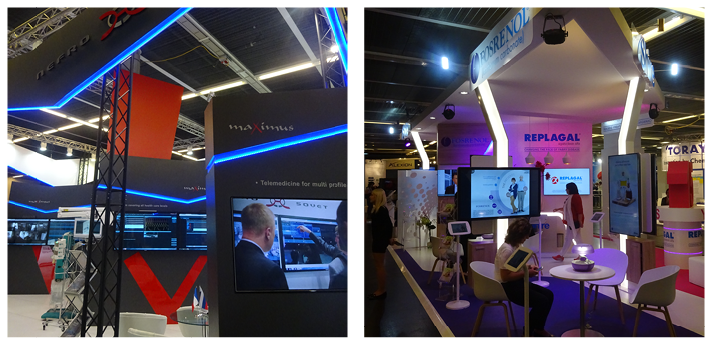
Treating Kidney Disease in Older Patients Needs Specialised Research
CALLS for developments in specialised treatment for older incident dialysis patients (≥65 years old) were proposed at this year’s 53rd ERA-EDTA Congress in Vienna, Austria. A statement paper, presented on the 22nd May 2016, discusses the importance of looking into the nutritional derangements in older patients on dialysis, pointing out the need for interdisciplinary collaborations between renal and geriatric clinic studies to assess the impact that diet, as well as lifestyle, have on older dialysis patients.
Generally, as people age they are likely to experience muscle performance loss as well as having an increased risk of poor health, disabilities, hospitalisation, and mortality. A high protein diet with enough calories and no amino acid deficiencies, however, can help promote muscle growth and therefore make people less susceptible to frailty and sarcopenia in later years, and therefore should be promoted, according to the paper.
Dr Lina Johansson, Clinical Academic Dietitian, Imperial College Healthcare NHS Trust, London, UK, stated the importance of the need for further research in an ERA-EDTA press release dated 22nd May 2016. “What seems to happen in cases of kidney disease is that frailty and sarcopenia actually occur a lot earlier in life, so people on dialysis are likely to become frail and develop sarcopenia at an earlier age than others, and their rate of muscle mass loss seems to be faster and their nutritional status seems to be worse.”
Although this may be the case, Dr Johansson pointed out that no research has been conducted on elderly patients on dialysis specifically. With a dialysis incidence rate of 55% in patients ≥65 years old, nephrologists need to develop specialised healthcare to manage the specific needs of this population of patients, it is argued. Dr Johansson also emphasised the importance of looking at social aspects such as cooking, shopping, and other routine tasks when seeking to address poor nutrition in older people, which are not usually taken into account.
Caution Advised to People Considering High-Protein Diets
MEDICAL examination should be sought before starting a high-protein diet, in recognition of the risks of kidney failure, advise the ERA-EDTA.
A high dietary increase of protein for a prolonged period of time, such as during a protein shake diet, could advance the stage of kidney disease and the need for particular medical treatment, according to an ERA-EDTA press release dated 19th May 2016. The organisation warned that people with impaired renal function may cause further damage to their kidneys, leading to a more serious stage of renal failure if they were to sustain high levels of protein in their diet. As a result, they advise people to have a general practitioner examine their renal function before doing so.
This advice is a reflection of international guidelines which suggest that patients with kidney disease who do not yet require dialysis should not exceed 0.80 g dietary protein intake/kg body weight/day. For a person weighing 70 kg, this means that 56 g would be the upper limit. The high level of protein in dietary protein shakes concerns the ERA-EDTA due to it exceeding these guidelines if consumed multiple times a day. For example, some protein shakes contain >30 g of protein per serving and can have further protein added when mixed with milk, which would exceed the guidelines with frequent daily consumption.
Kidney disease often goes undetected and does not produce symptoms for a long period of time. This means that people may be unaware they have the disease while also increasing their dietary intake of protein and potentially increasing their exposure to harm. Furthermore, decreased amounts of protein can help prevent the advance of renal impairment and so an early diagnosis of the disease could assist in slowing its progression.

One Step Closer to Optimised Timing of Renal Replacement Therapy
EARLY commencement of renal replacement therapy (RRT) for patients with acute kidney injury (AKI) has been demonstrated to both improve survival and reduce inflammatory biomarkers, according to an ERA-EDTA press release dated 22nd May 2016.
AKI is a prevalent complication of cardiac surgery, with incidence figures varying between 7% and 40%. Other factors are known to influence the onset of AKI, however the effect of timing in the initiation of renal replacement therapy is unknown, and thus, its optimisation is a challenge. This challenge is further augmented by the knowledge that some patients do recover from AKI, and that cost-efficiency considerations need to be taken into account.
A recent study examined the outcomes of early and late RRT initiation in 231 patients presenting with plasma-associated lipocalin >150 ng/mL, randomised to either early (Kidney Disease: Improving Global Outcomes [KDIGO] Stage 2) or late (KDIGO Stage 3) RRT. The primary endpoint, survival beyond 90-day follow-up, was achieved in 60.7% of the early group (n=112) compared with 45.3% of the late group (n=119), demonstrating a significant improvement in mortality (hazard ratio: 0.66; 95% confidence interval: 0.45–0.97; p=0.03). Secondary endpoints such as length of hospital stay and recovery of renal function were also significantly improved with early RRT. The concentrations of interleukin 6 and 8, both plasma pro-inflammatory mediators, were also diminished at a statistically significant level in the early group 1 day after initiation (p<0.001).
Although noting the strict enrolment parameters and single-centre nature, Prof Alexander Zarbock, Department of Anaesthesiology and Intensive Care Medicine, University of Münster, Münster, Germany, discussed the positive interpretations; “Additional evidence suggest that RRT before the onset of severe AKI may attenuate kidney-specific and non-kidney organ injury from acidaemia, uraemia, fluid overload, and systemic inflammation, and could potentially translate into improved survival and earlier recovery of kidney function. This might be the mechanism behind the reduced treatment duration and hospitalisation.”
Risk of Renal Failure Varies Across Europe
IMPORTANT research has been presented at this year’s ERA-EDTA congress concerning potential kidney donors. According to an ERA-EDTA press release dated 22nd May 2016, the study has determined the lifetime risk of renal failure in Europe to be between 0.5% and 1.5%. This is between 2 and 3-times lower than that of the USA, however the team noted that this is not directly comparable under the current research and that a specific risk prediction model should be used for patients in Europe.
Combining data from the ERA-EDTA Registry and population census data from Eurostat, the researchers gauged the population requiring renal replacement therapy (RRT) in 10 European countries to produce an estimate of the average lifetime risk of renal failure in each country. Levels of risk differ across Europe, with Finland having the lowest (0.44% in women and 0.88% in men), and Belgium the highest (1.14% in women and 2.05% in men). It is thought that the disparity in results across Europe may be the result of varying healthcare systems.
The data demonstrate that women have a significantly lower lifetime risk of renal failure than men. It should be noted that the data assessed in this study only observe patients receiving treatment for renal failure, as opposed to all individuals diagnosed with the disease. The researchers also suggested that older women in particular were less likely to receive RRT, which may have affected the results. Another interesting outcome of the analysis established that older populations have a lower lifetime risk of renal failure compared with younger populations. There is some debate over the efficacy of kidneys provided by older living kidney donors, yet the research in question may contribute to future decisions to allow older living kidney donors. The results could prove advantageous in subsequent studies and point toward several other areas that would benefit from further research.

Safety of Steroid Therapy Guidelines Requires Reassessment
BALANCING risk and benefit is a crucial aspect of developing therapeutic strategies, and clinical guidelines are typically built to consider this equipoise. The safety of clinical guidelines recommending steroid therapy for immunoglobulin A nephropathy (IgAN) has however been questioned, an ERA-EDTA press release dated 22nd May 2016 reports.
As the third most common specific cause of kidney failure across Europe, IgAN warrants a robust treatment strategy. Patients exhibiting IgAN and persistent proteinuria are currently recommended steroid therapy, although until recently this guideline had not been tested for safety and efficacy. The multicentre TESTING study therefore set out to evaluate these factors in 262 patients with an estimated glomerular filtration rate of 20–120 mL/min per 1.73 m2 and persistent proteinuria >1 g/day. Two cohorts were randomised to receive either oral methylprednisolone 0.6–0.8 mg/kg/day weaning over 6–8 months or matching placebo, following 3 months of blood pressure control and renin-angiotensin system blockade.
At a median follow-up of 1.5 years, serious adverse events (SAE) had occurred in 20 versus 4 patients in the steroid and placebo groups, respectively (p=0.001); the majority of these were due to infection, two of which were fatal. Along with time-averaged proteinuria, the rate of primary efficacy outcome (composite end-stage kidney disease) was significantly lower in the steroid-treated cohort, compared with the placebo arm (1.31 versus 2.19 g/day, p<0.001, and 5.1% versus 14.3%, p=0.019, respectively). Nonetheless, as a result of the excessive frequency of SAE, treatment in both groups was discontinued and the trial recruited no further participants.
Participant follow-up continues to be assessed, however at this junction it can be said that the results of this study necessitate reconsideration of the safety of current clinical recommendations for high doses of steroid therapy for IgAN patients at high-risk of renal progression.
High Sodium Intake Linked to Cardiovascular Disease in Chronic Kidney Disease
CARDIOVASCULAR disease (CVD) risk is increased in chronic kidney disease (CKD) patients who have a high intake of sodium, a recent prospective cohort study has demonstrated. The findings were presented at the ERA-EDTA congress in Vienna, Austria, according to an ERA-EDTA press release dated 24th May 2016.
Researchers from the Chronic Renal Insufficiency Cohort Study were able to determine dietary intake of sodium by measuring urinary sodium excretion in participants diagnosed with CKD. Whilst a positive correlation has long been established between sodium intake and blood pressure, previous research has provided little conclusive evidence of the connection between dietary sodium intake and risk of CVD, with no prior investigations concerning CKD patients.
The prospective cohort study examined 3,757 participants with CKD by calculating the cumulative mean urinary sodium excretion from three 24-hour urinary measurements. The mean age of the study group was 58 years, and 45% of patients were women. Congestive heart failure, stroke, and myocardial infarction were defined as the composite CVD events, and during the follow-up period (median 6.8 years), 804 CVD events were reported: 575, 148, and 305 of each composite CVD event, respectively. From the lowest (≤2,894 mg/24 hours) to the highest (>4,548 mg/24 hours) quartile of calibrated sodium excretion, 174, 159, 198, and 273 composite CVD events occurred. For heart failure, the cumulative incidence in the highest quartile of calibrated sodium excretion compared to the lowest was 23.2% versus 13.3%, 10.9% versus 7.8% for myocardial infarction, and 6.4% versus 2.7% for stroke, respectively. The unprecedented results demonstrated that higher levels of urinary sodium excretion were found to have a positive correlation with increased risk of CVD.
It is hoped that the study will prove extremely valuable in future research and current practice for nephrologists. Reduction of sodium in the diet may be constructive in preventing CVD in patients diagnosed with CKD, and it is recommended that future research focus on sodium reduction and its influence on CVD risk.
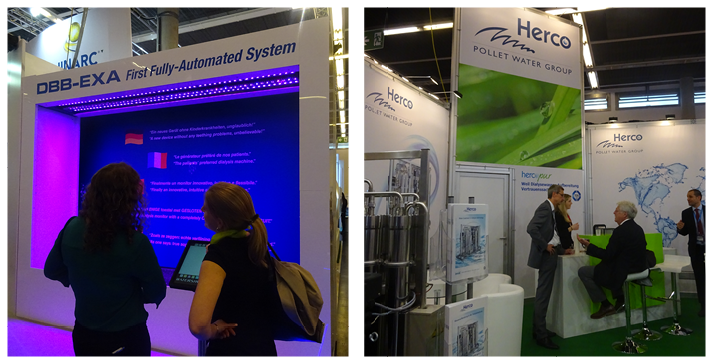
Challenging Clinical Practice for Lipoprotein(a) Lowering Therapies
REDUCTION of a risk factor for coronary artery disease (CAD) may be available for individuals predisposed to high lipoprotein(a), (Lp[a]). Epidemiological studies in the past have shown an association between Lp(a) levels and cardiovascular risk, which has resulted in lipid apheresis being a common practice for lowering Lp(a) in patients with CAD. However, new evidence presented in an ERA-EDTA press release dated 22nd May 2016 suggests that this practice may need to be reconsidered.
The research evaluated the association between Lp(a) and CAD severity in 3,313 patients undergoing coronary angiography in the Ludwigshafen Risk and Cardiovascular Health (LURIC) study. Each patient had serum Lp(a) level measured as well as the status of two single nucleotide polymorphisms (SNPs) (rs10455872, rs3798220), which are associated with elevated Lp(a) throughout life. These tests were validated against 514 patients from the Homburg Cream and Sugar (HCS) study.
Presence of a minor allele at either of the SNPs was associated with a median 250.2% increase in Lp(a), which was strongly associated with angiographically defined CAD (hazard ratio [HR]: 1.89, p<0.001) and time to first myocardial infarction (HR: 1.2, p=0.05). At long-term follow-up, an association between these alleles and all-cause or cardiovascular mortality was not found; the evidence suggested that in patients with prevalent CAD, outcomes and Lp(a) are not associated. Estimated marginal means of Lp(a) decreased following myocardial infarction (-49.4%) compared with patients with stable CAD. Other markers such as CRP, fibrinogen, and interleukin 6 increased. This points to the function of Lp(a) as a negative acute phase protein.
These findings contest the current practice of Lp(a) lowering for CAD patients, suggesting that such therapies would be more effective as a preventative measure for individuals who have a genetic predisposition to either of the two alleles. The findings have implications for clinical practice and have already been validated in both the HCS and KAROLA cohorts.
Austria Leading the Way in Chronic Kidney Disease Prevention
THIS YEAR’S ERA-EDTA congress was the second biggest in the world of nephrology. It covered a range of topics including current research and understanding of the treatment of kidney disease and related illnesses, renal replacement therapy, as well as an in-depth discussion on the use of ‘big data’ and its role in the development of individualised therapy.
The main focus of this year’s congress was on the prevention of chronic kidney disease (CKD), a frequent consequence of diabetes mellitus or high blood pressure in later life. As the number of patients diagnosed with these disorders is soaring, prevention is becoming a priority for nephrologists worldwide. Prof Gert Mayer, Department of Internal Medicine, Medical University Innsbruck, Innsbruck, Austria, commented in an ERA-EDTA press release dated 19th May 2016: “Demographic change is confronting us with a challenge here, especially since the number of those with diabetes and/or high blood pressure has risen. Present day nephrology sees its mission in protecting these high-risk patients against terminal renal failure.”
The Austrian model of prevention is a novel strategy for calculating which patients should be referred to a nephrologist for treatment, named the ‘60/20’ concept. This includes any patients whose kidney function has reduced to ≤60% and a risk constellation exists, as well as those whose kidney function is reduced to 20% for discussion of the best renal replacement therapy. There are also guidelines for the establishment of kidney care centres to accommodate the number of patients being referred and improve the availability of post-mortem donations. “As far as prevention is concerned, nephrology in Austria is a model to be emulated Europe-wide. Nephrologists and general practitioners work closely together here, and our CKD Prevention Program 60/20 sets an example that many other countries can follow. We can also refer to the specific successes we have achieved: in Austria, the incidence of new CKD cases is declining!” stated Prof Dr Karl Lhotta, Department of Nephrology and Dialysis, Landeskrankenhaus Feldkirch, Feldkirch, Austria.

